

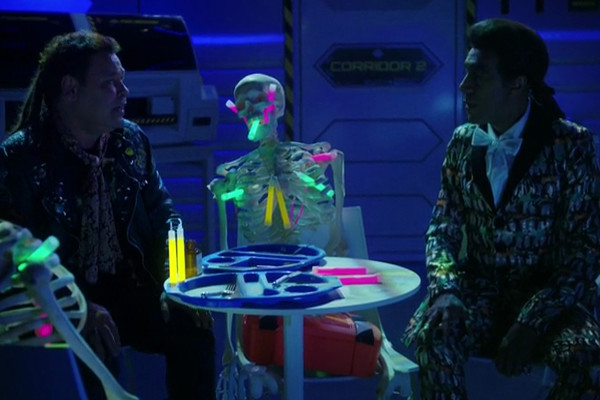
After eleven series, there's naturally going to be some repetition of plots, and the karma field that effects the crew in this episode does bring to mind series four's Justice. Although episodes produced since Grant-Naylor split up (cited by Grant in an episode of Carpool as "musical differences") have been generally inferior to those that came before, it's hard not to feel a little sorry for Doug Naylor, having to craft the show alone.
Although it'd be curious to see an alternate reality where Rob Grant was the one writing it solo, Red Dwarf was already reaching the end of its natural lifespan during series six, where the ideas began to dry up, and the humour devolved from character comedy to US-style one-liners. Samsara brings back a welcome return of some character comedy between the leads, and although it doesn't all come off, it feels like an episode of Red Dwarf, something that not all of the Dave episodes can claim. These characters have now lived with each other for over twenty years, and deserve to grow old gracefully, not spend out the rest of their days firing off one-liners in each other's direction. Samsara goes some way to bucking this trend.
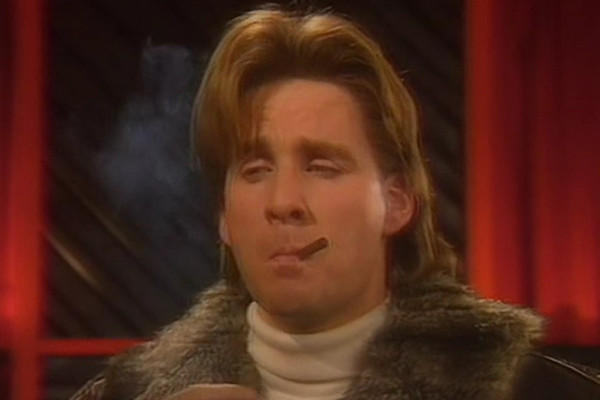
Although Gunmen of the Apocalypse comes close, Dimension Jump has to take the prize of Red Dwarf's most overrated episode. Regarded as a "classic" by many, and the cause of dozens of T-Shirts, it takes the character of Rimmer and renders it in two dimensions as he meets a parallel counterpart, "Ace". Although all of the Red Dwarf characters started out as somewhat broadly drawn, seriess two and three added depth to Rimmer's character, and Chris Barrie's increasing skill with the part made it the most interesting of all the crew.
Sadly, series four strips this away, as Rimmer became more and more unbelievable. No one is so oblivious that they can't understand why others aren't interested in photo collections of telegraph poles, Morris Dancing or anecdotes about Hammond Organs. And, while such things are addressed in three other series four episodes, those other episodes don't have the virtue of being praised as classics, or, for that matter, amped-up audience members screeching throughout.
A lot of it seems something the cast had more fun making than it is to watch. While broad parody can work in Red Dwarf, it's best when it sticks to stories that are contained within its own reality, rather than crass send ups of Casablanca and Top Gun. Suddenly the series is no longer tangible and real, but "just a laugh". And while the series holding comedy in higher regard than its own sci-fi settings has always been praised here, it's incomprehensible how alternate reality versions of Holly and Kryten can have human forms. (Note that the Cat's alternate persona of a Padre gets next to zero laughs... Grant-Naylor had originally written the stylish Cat as a down-on-his-luck janitor, but the BBC nixed it, fearing that it was negative racial stereotyping).
The episode was due to end the fourth series, but was brought forward after the outbreak of the Gulf War saw the anti-war Meltdown pushed back in the run. It marks a real downturn in the programme as, while perhaps averagely entertaining, it marks a broader take on the format that often began to be taken as the norm rather than an exception.
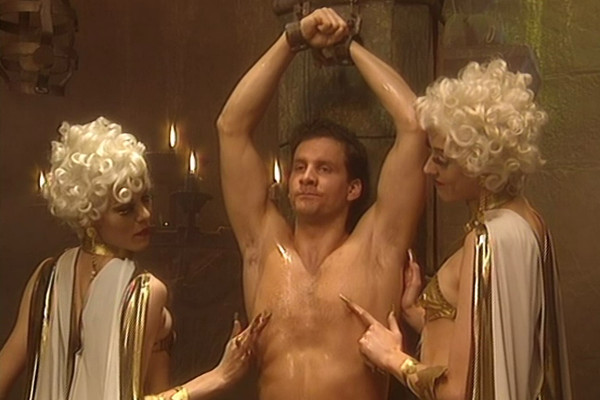
Terrorform is a collection of decent scenes that somehow never really feels like it comes together as a whole. Heavily brought together in the edit suite, as with nearly all of series five, it's somehow less than the sum of its parts. Filmed just after Holoship, it means that there's two back-to-back episodes (although not screened as such) that see Chris Barrie take his shirt off.
What really lets Terrorform down is the final punchline, which underwhelms, as do most of the series five endings... Back To Reality not even really bothering with one. Perhaps it's also that, as good a character as Rimmer is, well brought to life, the Rimmer episodes were also becoming the show's fall-back point at this stage.
There does also appear to be a very conscious effort to appeal more to the US market with series five, with the characters regularly indulging in dialogue like "dork" and "schmuck"... consequently the dynamic of the programme can seem a little "off" at this stage, a very British series being artificially transformed into something it's not. However, it's a testament to the quality of the series during the Grant-Naylor years that this, the worst episode of series five and one of the five weakest entries from the initial 1988-1993 run, still ranks higher than 39 other episodes.
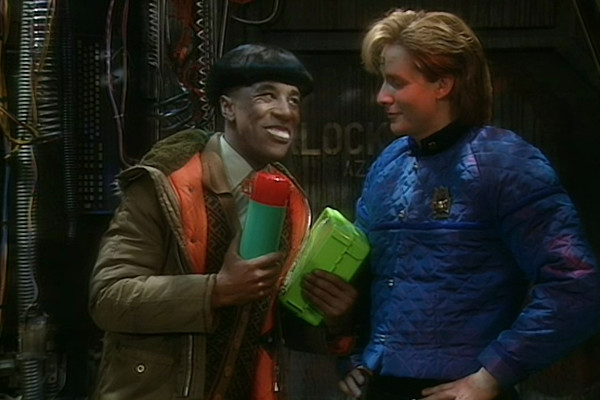
Emohawk Polymorph II is commonly regarded as one of the weakest series six episodes, though is watchable enough. Cat's previously-unmentioned hypersensitive smell ability here contradicts previous episodes the most, where his ability to sniff out a Polymorph does clash with the original Polymorph episode where he had no such ability.
The cast often remarked on how tiresome the audience reactions could get during series six, where they're so enthusiastic they roar with laughter at Duane Dibbley's wig before he's even fully revealed. Tales abound of the cast looking off screen during certain sequences of the series, with a wearied, "there goes another one" expression. This said, while Chris Barrie's irritated expressions at Kryten's "Star Corps Directives" does appear to be more than acting, he does also appear to be genuinely amused by John-Jules's performance as Dibbley.
The return of Ace Rimmer is also funnier than the first, given that it's a deliberately OTT performance from a man with stolen emotions, rather than a credible character in its own right. Emohawk's definitely a weak episode, and is appalling fan service, but, if approached with a charitable state of mind, can be amusing in a throwaway sense.
Lastly, a point of trivia sees the episode often written as "Emohawk - Polymorph II" or "Emohawk: Polymorph II"... the title presented here reflects how it appears onscreen.
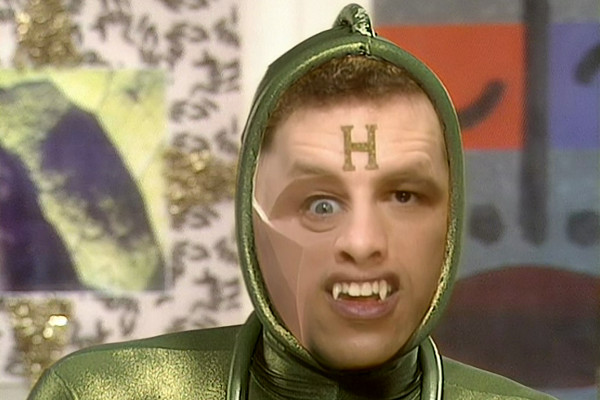
Legion is an amusing episode that brings Rimmer's "hard light" form to the series, and features some memorable sequences. However, it's perhaps flattered by coming in the mediocre 1993 run, seeming better than it is because of being surrounded by lesser instalments, and being often overrated as a result.
Perhaps one of the oddest moments occurs when Legion - a gestalt entity composed of all the crew - willingly takes his mask off to show how he is being reduced with each crew member being knocked unconscious. With no purpose other than to show the viewers at home, it's an ill-thought out sequence in an otherwise pretty funny instalment.
The strain of behind-the-scenes egos was still running through to series six, so much so that it made Chris Barrie decide to only appear in half of the following series when the programme returned three years later. He was taken aback when his real-life remarks about the lack of professionalism involved in production were used for a line at the start of this episode. What is very notable is that Robert Llewellyn gets the vast majority of all the jokes, the others frequently just feeds... something which must have been almost toxic in such a competitive working environment.
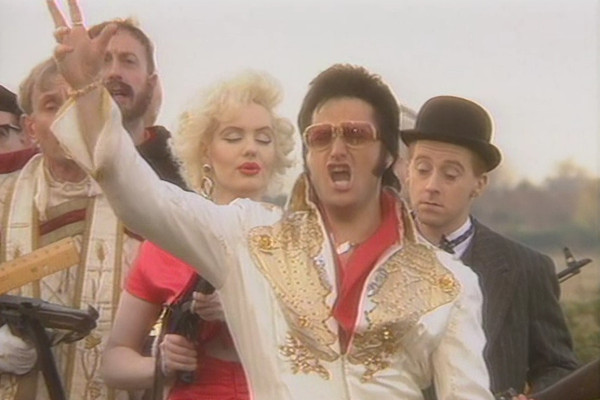
Although six solo Doug Naylor series may have since changed the consensus, for a long time Meltdown was regarded as the worst Red Dwarf episode ever made. It received poor reviews in the usual SF magazines, while the official Red Dwarf Smegazine would regularly eviscerate it. (For what it's worth, its high 8.3/10 vote on the IMDb puts it above 14 Grant-Naylor episodes and 31 post-Grant ones at date of writing).
Some of it can be more than a little broad, with Tony Hawks making his eighth and final appearance in the series to play a face-slapping Caligula, and the Cat crying in full cartoonesque fashion. But following a highly-regarded episode that gave us two broad versions of Rimmer, it seems strange that this one is often slated for the same thing. Some reviews out there even complain about the footage of Daikyojû Gappa not being cleaned up and integrated more realistically into the episode... despite the fact that its very fakeness is the joke. As with moments like the "instant dinner" in Polymorph, it's perhaps not strictly a "Red Dwarf" joke, but works well enough.
29 years after Meltdown aired, it's aged quite badly, whereby it's obvious it's cheaply filmed in a park and most of the jokes are incredibly broad. There are some good lines, however, and routines about "the cover of daylight" and "pawn sacrifice" are worthwhile, though Rimmer's complete insanity is hard to come to terms with. Overall it's probably one of the five weakest Grant-Naylor scripts, though better than the majority of episodes from the post-Grant years. It's also a vital episode in terms of continuity, in that it's the first episode to feature Rimmer's light bee, which does seem to contradict earlier episodes, but allows for greater freedom for the character.
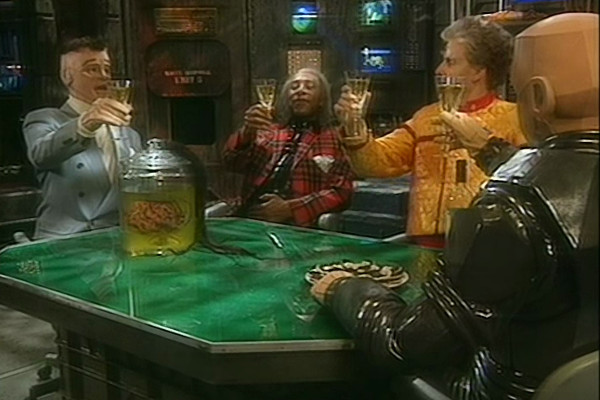
Out Of Time treads familiar ground, with the crew meeting their future selves, and ends with a cliffhanger. It seems as if Grant-Naylor were so uncertain of how to resolve the destruction of the crew that they left in three possible get outs, only one of which - a time paradox - being used when the series finally returned three years later. Considering the scripts were being rewritten up to recording, it's amazing that it came out as well as it did... very nearly the best episode of series six.
There are three applause breaks in Out Of Time, and the cast remark on the commentary on how future warm up personnel would encourage this so much that even the crew entering scenes during series eight would receive an American-style burst of appreciation, much to their dismay. Stories abound that the audience even laughed during the crew's "deaths", and had to be removed from the soundtrack for the final dramatic scenes.
Overall, despite being significantly weaker than the rest of the Grant-Naylor series, series six still retains the energy that made the others work, despite the obvious ennui of the cast. Of the much-discussed "running gags", most of which are, frankly, tedious, then there's 20 throughout the series, with a combination of "Cat sayings", "Cat fashion gags", "Space Corp Directives", and, most prominently, "Kryten head shape" gags.

Series four is perhaps the least essential of the first five or six seriess, the one where the shows becomes less about Lister trying to get home and more about the "caper of the week". Kryten's part is greatly increased, and even the Cat decides he wants to be an active participant in Starbug-based adventures, as all six stories are based around events that happen outside of the ship. Some of them work, others don't, but the series suddenly becomes, for the main, less essential, largely because the emotional lives of the crew are generally unaffected.
D.N.A. is a decent enough episode, featuring such memorable moments as Kryten being turned to human form, "taking the front and the back", the spare heads and the curry beast. Although Red Dwarf wasn't made to be endlessly rewatched and analysed several years after the fact, the overt Robocop reference does date this one a little more than most, and some of the content is playing to the gallery, with both Charles and Llewellyn notably aware of the audience in the "double polaroid" scene.
In terms of trivia, then this is the first episode to deliberately contradict what went before and place it more in line with the novels: Lister describes himself (and is described by the DNA machine) as being from the 23rd century, whereas it had previously been established that the events of the first episode began in 2077. He is also revealed to have dated Kochanski, with the writers feeling that him spending all this time longing for an unrequited love he never dated was unrealistic, despite the fact that this IS the kind of thing that lonely, isolated men would obsess over. Perhaps even more unbelievable is Rimmer not liking Glenn Miller...
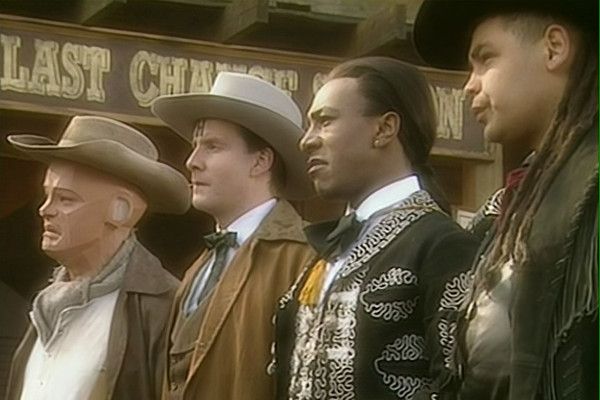
A reluctant top 30 placing here, as this is an inexplicably popular episode that won an International Emmy and was once voted by fans as the greatest episode of the entire series. Comedy is, as often discussed in these Red Dwarf reviews, subjective, but even the amped audience are notably muted during the four times Cat does his cringingly unfunny "Riviera Kid" dance.
This isn't to say that the episode is entirely without merit. Well produced, and thankfully shorn of the tedious "running gags" of series six (just one "Article of War" joke taking the same form as a Space Corps Directive routine) it shows an originality that most of its 1993 peers lack. Of course, science fiction shows doing westerns is a surprisingly common occurrence, featuring in, amongst others, Star Trek, Doctor Who, Blake's 7 and The Prisoner.
Red Dwarf is more contrived than most, giving viewers the unlikely set up that a group of Simulants would soup up Starbug just for sport, and then get taken out themselves with a fluke shot. The episode has two DVD commentaries, one featuring the cast and another featuring fans who won a competition.
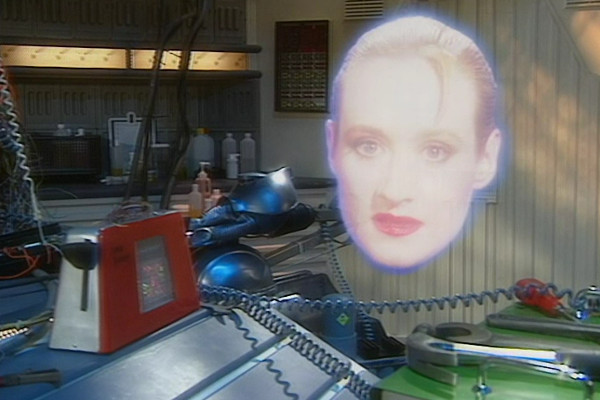
Series four of Red Dwarf did see the programme begin to get more of an "adventure of the week" series and steer away from its roots. The fundamental issue with the show's set up is, of course, that if it followed its natural path of Lister getting home, the series would end. Four years in, and the the plots and jokes begin to dictate the characters, rather than the other way around.
White Hole does try something slightly new by restoring Holly to genius level, though Hattie Hayridge's chemistry with the cast was never as strong as that of Norman Lovett's, possibly because she didn't share the off-screen tension that her predecessor possessed. While it is, ostensibly, a second Holly-based story - though the character is offline for much of it for plot reasons - it's no Queeg in terms of the material she's given. (It's especially notable that in the commentaries the others frequently talk over her, or disregard what she's saying, though this might be more systematic of male culture as a whole, or the extra people in the commentary booth, rather than something specific to Hattie).
White Hole is generally one of the better instalments, but, much like series three's Timeslides, finds its entire plotline undone by the end, causing it to feel somewhat inconsequential. Also of note is that the programme is still in the part of its lifespan where the audience chose whether or not to laugh at each joke, audibly offering up no mirth to the Cat's remark about Holly banging her head on the screen. In terms of trivia, then Craig Charles's affectation of calling people "man" reaches its peak here, with no less than a dozen instances of the term.